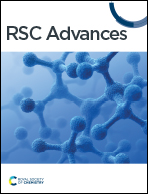Comparative study of distinct halide composites for highly efficient perovskite solar cells using a SCAPS-1D simulator
Abstract
This research investigates the influence of halide-based methylammonium-based perovskites as the active absorber layer (PAL) in perovskite solar cells (PSCs). Using SCAPS-1D simulation software, the study optimizes PSC performance by analyzing PAL thickness, temperature, and defect density impact on output parameters. PAL thickness analysis reveals that increasing thickness enhances JSC for MAPbI3 and MAPbI2Br, while that of MAPbBr3 remains steady. VOC remains constant, and FF and PCE vary with thickness. MAPbI2Br exhibits the highest efficiency of 22.05% at 1.2 μm thickness. Temperature impact analysis shows JSC, VOC, FF, and PCE decrease with rising temperature. MAPbI2Br-based PSC achieves the highest efficiency of 22.05% at 300 K. Contour plots demonstrate that optimal PAL thickness for the MAPbI2Br-based PSC is 1.2 μm with a defect density of 1 × 1013 cm−3, resulting in a PCE of approximately 22.05%. Impedance analysis shows the MAPbBr3-based PSC has the highest impedance, followed by Cl2Br-based and I-based perovskite materials. A comparison of QE and J–V characteristics indicates MAPbI2Br offers the best combination of VOC and JSC, resulting in superior efficiency. Overall, this study enhances PSC performance with MAPbI2Br-based devices, achieving an improved power conversion efficiency of 22.05%. These findings contribute to developing more efficient perovskite solar cells using distinct halide-based perovskite materials.



 Please wait while we load your content...
Please wait while we load your content...